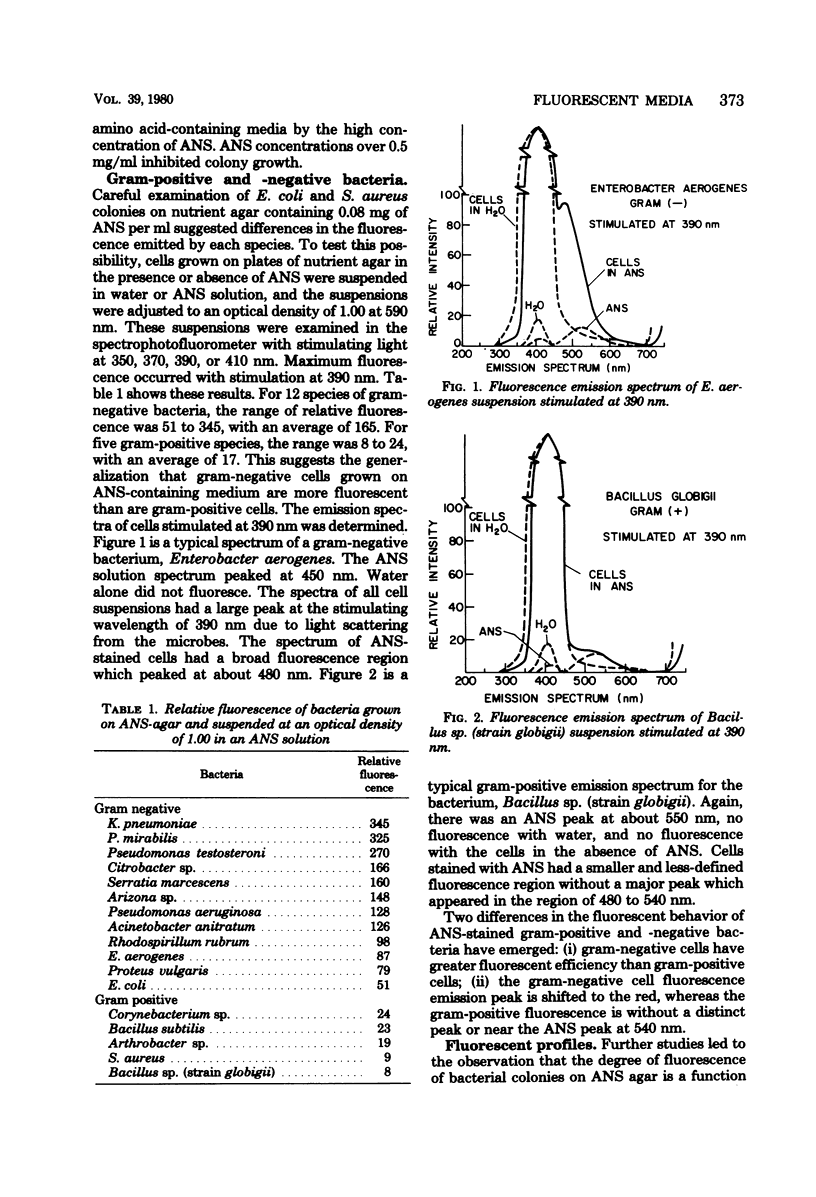Abstract
Media containing the fluorogenic compound 8-anilino-1-naphthalene sulfonic acid may be used to discriminate between gram-positive and gram-negative bacteria and to differentiate between various species of bacteria. Fluorescent light emitted from colonies of gram-negative bacteria on 8-anilino-1-naphthalene sulfonic acid-containing agar was visually more intense than that on gram-positive bacteria. The emitted light from the gram-negative bacteria differed in wave-lengths from that of light emitted by colonies of gram-positive bacteria. The fluorescent intensity of colonies on complete 8-anilino-1-napthalene sulfonic acid agar supplemented with 1% of single substrates varied depending on the bacterial species, thus allowing the development of profiles used to identify 12 different species.
Full text
PDF



Selected References
These references are in PubMed. This may not be the complete list of references from this article.
- Chen R. F. Removal of fatty acids from serum albumin by charcoal treatment. J Biol Chem. 1967 Jan 25;242(2):173–181. [PubMed] [Google Scholar]
- Lepp C. A., Nowlan E. D., Mason R. D., Ramsey W. S. Fluorophores as visualization aides in agar growth media. Experientia. 1979 Jul 15;35(7):868–869. doi: 10.1007/BF01955117. [DOI] [PubMed] [Google Scholar]
- McClure W. O., Edelman G. M. Fluorescent probes for conformational states of proteins. I. Mechanism of fluorescence of 2-p-toluidinylnaphthalene-6-sulfonate, a hydrophobic probe. Biochemistry. 1966 Jun;5(6):1908–1919. doi: 10.1021/bi00870a018. [DOI] [PubMed] [Google Scholar]
- Weaver R. W., Zibilske L. Affinity of cellular constituents of two bacteria for fluorescent brighteners. Appl Microbiol. 1975 Feb;29(2):287–292. doi: 10.1128/am.29.2.287-292.1975. [DOI] [PMC free article] [PubMed] [Google Scholar]


